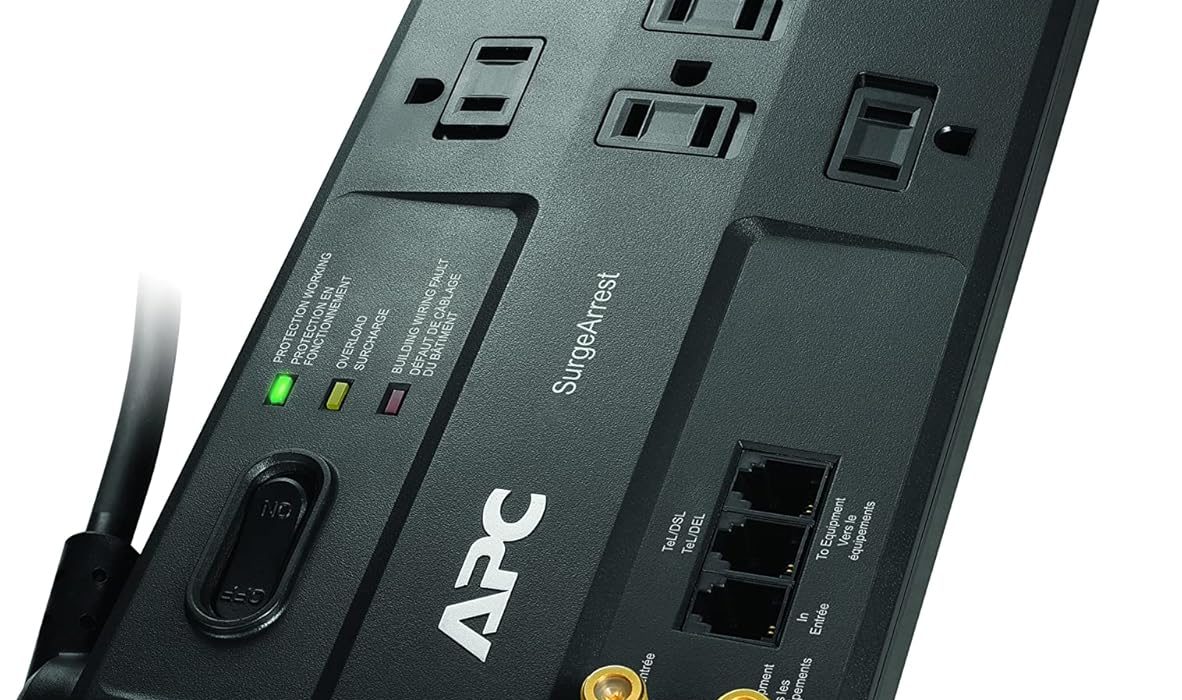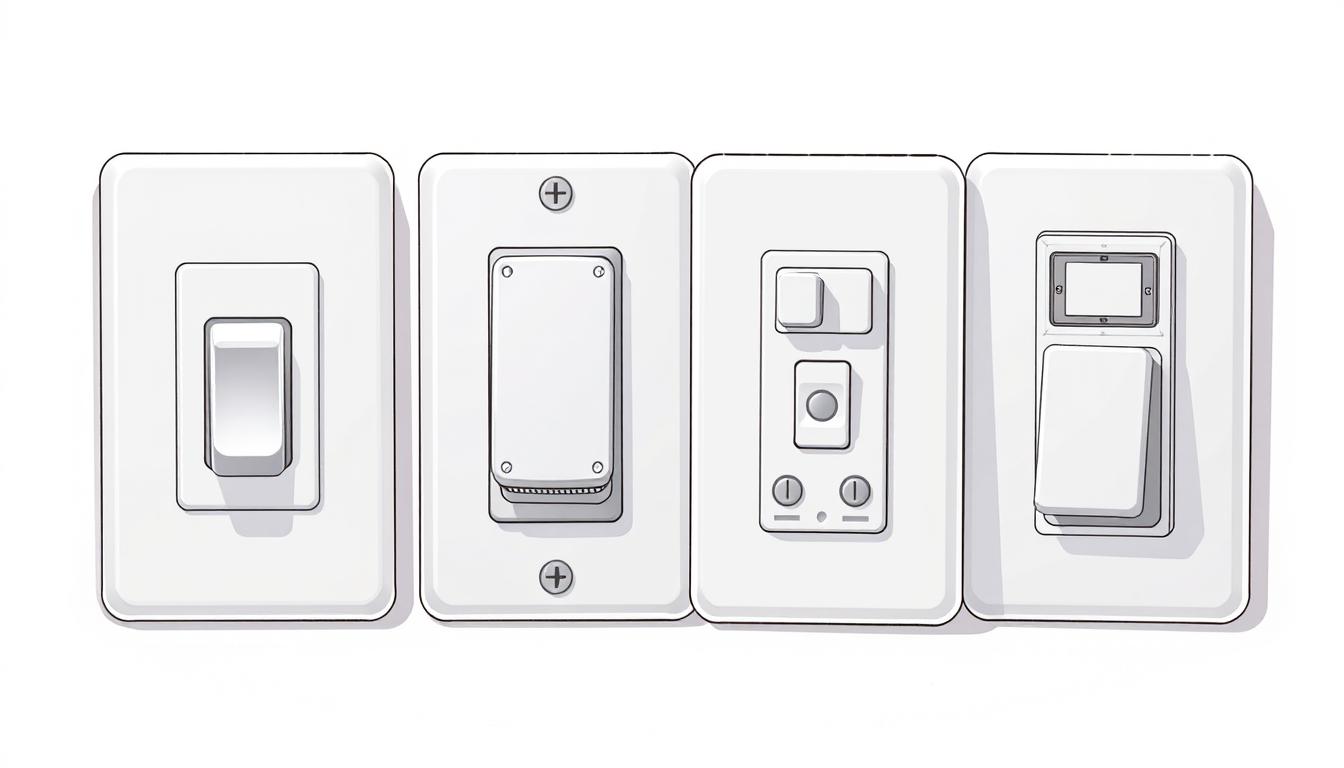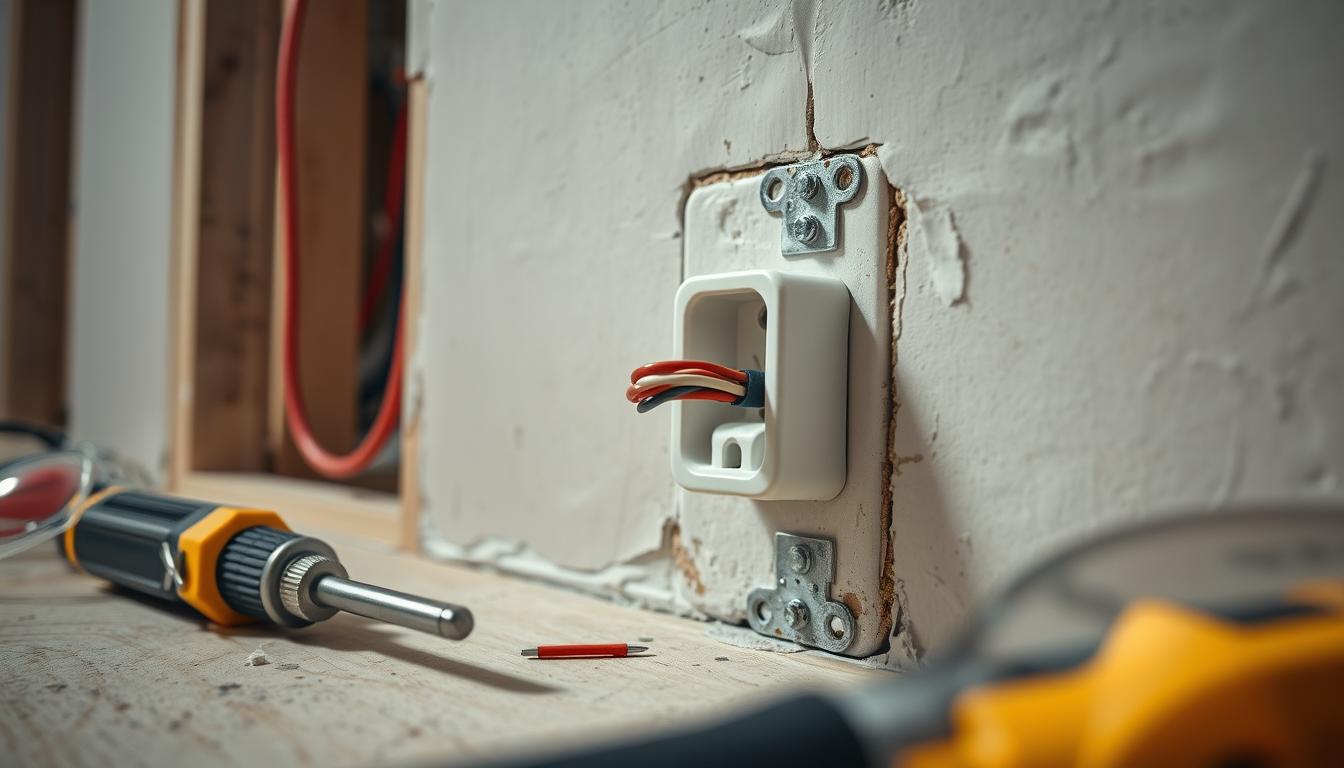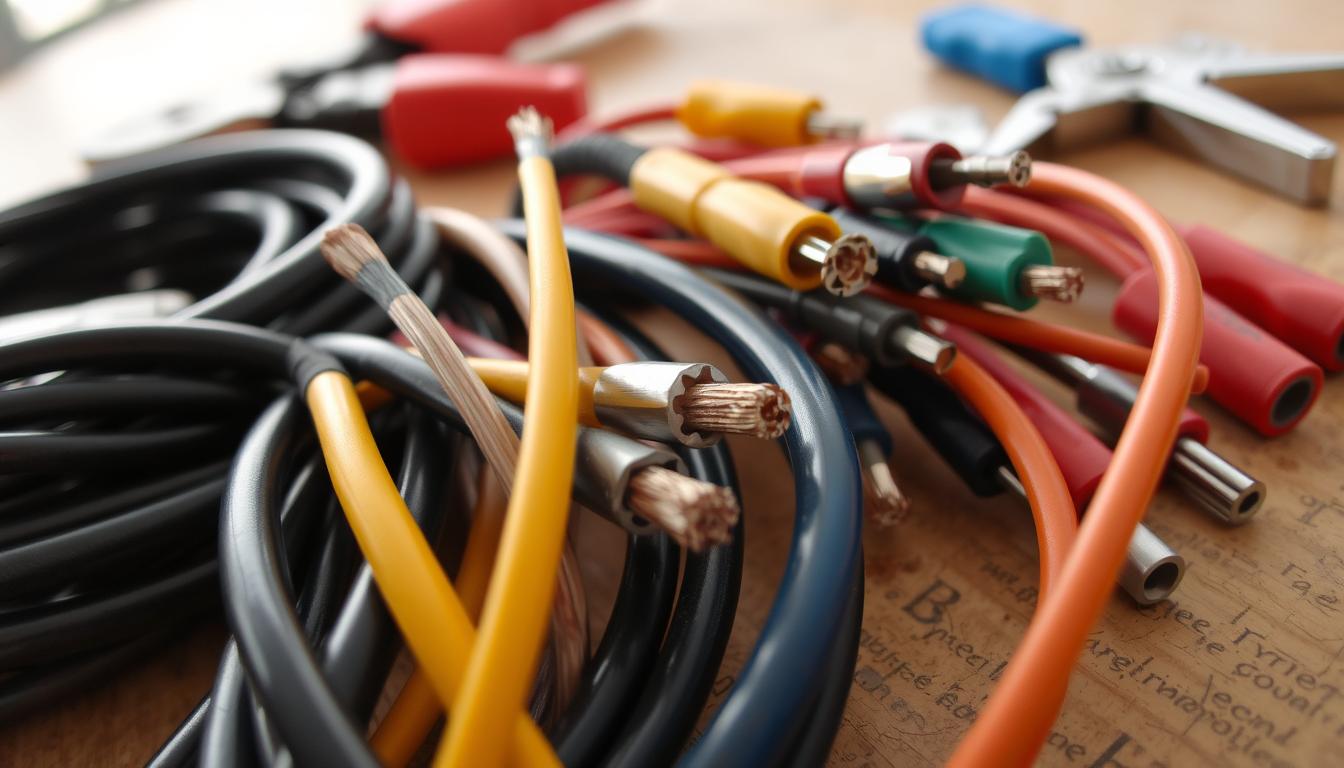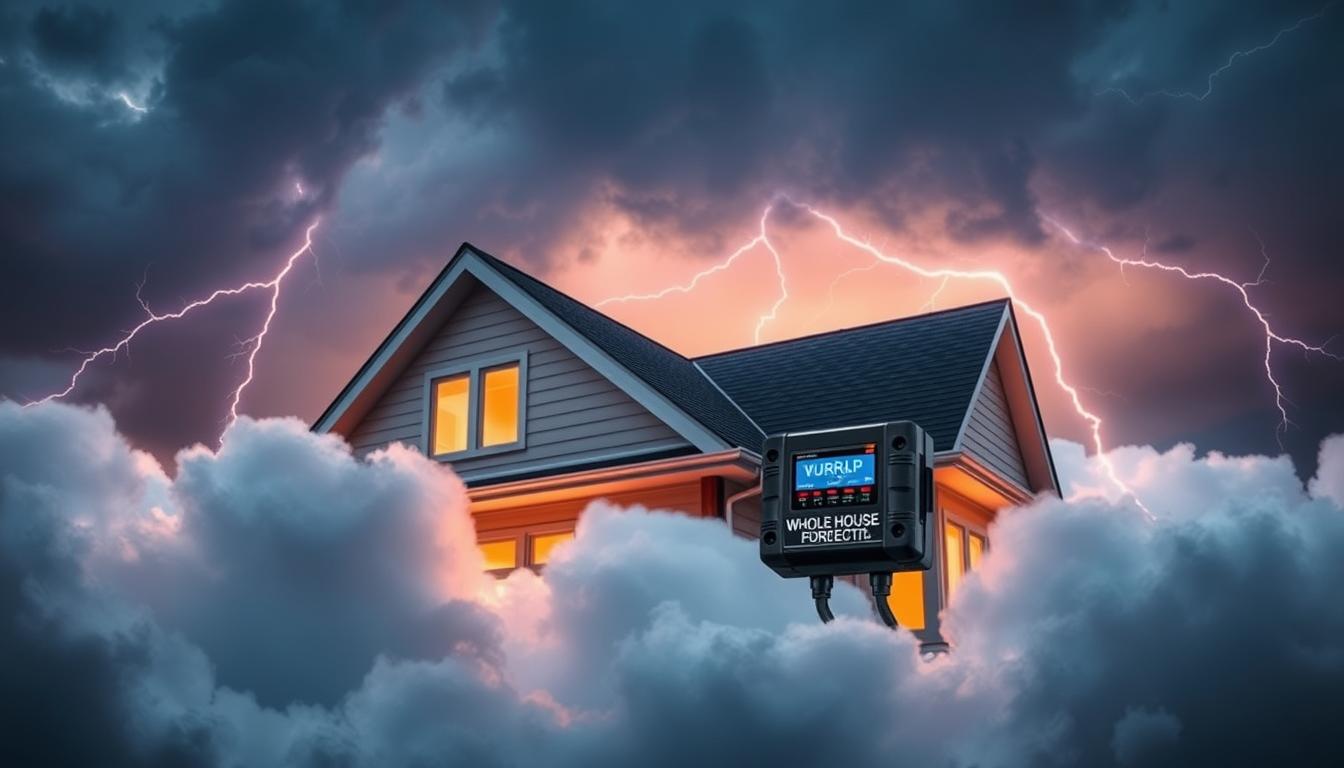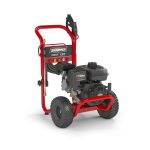5 Essential Surge Protectors That Actually Protect Your Electronics
In our hyperconnected world, your electronics are more than simple appliances or gadgets: they’re investments that hold invaluable data, enable day-to-day functionality, and keep you entertained and productive. From smartphones to laptops, gaming consoles to home theater systems, and kitchen appliances to Internet-of-Things (IoT) devices, our homes are filled with electronics that are both delicate and essential to our daily routines. Without the proper protection against power surges, however, all those investments could be in jeopardy.
Power surges, spikes, and electrical fluctuations can irreparably harm your devices, sometimes in the blink of an eye. It’s not uncommon for people to lose an expensive television or an entire computer setup in an instant due to a sudden voltage spike. The simple solution? A reliable surge protector that genuinely does its job.
But how do you choose from the overwhelming variety of surge protectors on the market? What features actually matter, and which products live up to their claims? This comprehensive guide will take you step by step through the essentials of surge protection, how surge protectors work, which specifications are the most crucial, and finally, delve into five carefully selected surge protectors that consistently earn top ratings for reliability, durability, and their ability to truly protect your electronics.
Table of Contents
- What Is a Surge Protector?
- Why Do You Need a Surge Protector?
- Key Specifications and Features to Look For
- Joule Rating
- Clamping Voltage
- Response Time
- Number of Outlets and Port Options
- EMI/RFI Noise Filtering
- Warranty and Connected Equipment Protection
- 5 Common Myths About Surge Protectors
- Detailed Reviews: 5 Surge Protectors That Actually Protect Your Electronics
- APC SurgeArrest Performance P11VT3
- Belkin BE112230-08 Pivot-Plug Surge Protector
- Tripp Lite TLP1008TELTV
- CyberPower CP1500PFCLCD (UPS with Surge Protection)
- AmazonBasics 6-Outlet Surge Protector Power Strip
- Placement, Maintenance, and Additional Tips
- Frequently Asked Questions (FAQ)
- Conclusion
Let’s dive right in.
1. What Is a Surge Protector?
A surge protector is a device (often in the form of a power strip) designed to protect electrical appliances from voltage spikes. It looks deceptively simple—like a standard power strip with multiple outlets—but it includes internal components that detect and redirect excess voltage, thereby preventing harmful levels of current from flowing to your devices.
When a power spike or surge occurs (for example, due to a sudden restoration of power after an outage, nearby lightning strike, or other fluctuations in the electrical grid), the surge protector works as a gatekeeper. Instead of allowing the excessive current to pass through to your electronics, it diverts or “absorbs” it (depending on the type of protector) to safeguard your gear from damage.
How Does It Differ From a Basic Power Strip?
Many basic power strips simply provide multiple outlets for convenience but have no protective components against voltage spikes. They might include a circuit breaker that trips under too heavy a load (overcurrent protection), preventing fires or tripped breakers in your house’s electrical panel, but this is not the same as surge protection. That means a cheap power strip will do little to protect your pricey TV or computer if there’s an unexpected surge. If you want genuine peace of mind, you need a true surge protector, not just a power strip.
2. Why Do You Need a Surge Protector?
We often assume our home or office electrical system is consistent, but we’re regularly exposed to voltage fluctuations. Here are a few major reasons why you need a surge protector:
- Protect High-Value Investments: Modern electronics often come with hefty price tags. A single severe surge can quickly destroy a PC, television, or gaming console. A surge protector is the first line of defense.
- Lengthen Equipment Lifespan: Even if devices don’t die outright from one large spike, the smaller, more frequent surges can degrade internal components over time. This slow damage can shorten the lifespan of valuable hardware.
- Prevent Data Loss: If you have devices like computers or external hard drives connected directly to unprotected electrical outlets, sudden power spikes can cause system failures and potential data loss. While a surge protector doesn’t necessarily provide backup power (unless it’s a UPS/surge combo), it does reduce the risk of immediate damage that can lead to data corruption.
- Safeguard Against Lightning Strikes: While no surge protector can guarantee 100% protection from a direct lightning strike, a surge protector with phone/fax/network ports can at least help reduce damage that might travel through cables. And if there’s a near miss or an indirect lightning surge, a quality surge protector greatly improves your devices’ chances of surviving.
- Added Peace of Mind: Most importantly, knowing that your expensive devices are plugged into a strong surge protector offers significant peace of mind. Even if you never experience a full-blown power surge event, the everyday smaller surges are being minimized.
3. Key Specifications and Features to Look For
Every surge protector is not created equal. There’s more to a high-quality protector than just the brand or the number of outlets. Below are the key specs and features you should consider before making a purchase:
Joule Rating
- Definition: The joule rating represents the amount of energy a surge protector can absorb before it begins to fail. Essentially, it’s a measure of how robust the unit’s protective capacity is over time.
- Why It Matters: The higher the joule rating, the more times (and the bigger) surges it can handle. If you live in an area with frequent storms or voltage fluctuations, a higher joule rating is advisable.
- Recommended Range: Look for a protector with at least 600 joules for basic protection. Serious protection often starts around 1000 joules or more, especially for sensitive or high-end electronics.
Clamping Voltage
- Definition: Clamping voltage, sometimes also referred to as “let-through voltage,” is the voltage level at which the surge protector starts to restrict or clamp the surge.
- Why It Matters: A lower clamping voltage is better because it indicates the surge protector will intervene earlier to divert excess voltage, preventing higher voltages from ever reaching your equipment.
- Recommended Range: Common clamping voltages for a good surge protector are around 330V, 400V, or 500V. The best surge protectors typically have a 330V clamping voltage for standard 120V residential lines.
Response Time
- Definition: This is the time it takes for the surge protector to respond to a surge event and start clamping.
- Why It Matters: Surges happen in nanoseconds. If a surge protector’s response time is too slow, your devices could be exposed to dangerously high voltage before the protector even kicks in.
- Recommended Specs: Many surge protectors advertise a response time of less than one nanosecond or < 1 ns. Look for the smallest value you can find, although in practical terms, these variations are often minuscule.
Number of Outlets and Port Options
- Number of Outlets: Think about the number of devices you plan to plug in. Some protectors have as few as 2–4 outlets, while others go as high as 12 or more.
- USB Ports: With phones, tablets, and other USB-powered devices everywhere, having built-in USB ports can reduce clutter and the need for extra wall chargers.
- Phone/Coax/Ethernet Protection: Some surge protectors come with RJ11 (phone), RJ45 (Ethernet), or coaxial cable pass-through with built-in surge protection. This is particularly important for modems, routers, and cable boxes.
EMI/RFI Noise Filtering
- Definition: EMI (Electromagnetic Interference) and RFI (Radio Frequency Interference) noise filters help reduce interference that could degrade the performance or audio/visual clarity of connected devices.
- Why It Matters: Especially important for home theater setups or audio/video equipment where “clean” power supply can affect sound and picture quality.
Warranty and Connected Equipment Protection
- Warranty: Many surge protectors come with a limited lifetime warranty or warranties lasting several years.
- Connected Equipment Guarantee: Some reputable brands offer a monetary guarantee (sometimes up to tens of thousands of dollars) that if your equipment is damaged by a surge while connected properly, they’ll cover the repair or replacement costs.
4. 5 Common Myths About Surge Protectors
Before we jump into specific product recommendations, let’s dispel a few widespread myths:
- Myth: “A regular power strip is the same as a surge protector.”
Reality: Basic power strips often lack actual surge protection. They simply provide multiple outlets and maybe a circuit breaker, but no real surge suppression components. - Myth: “Once I buy a surge protector, I’m protected forever.”
Reality: Surge protectors degrade over time. Each surge, no matter how small, can diminish the protective capacity. That’s why checking the “Protected” or “Grounded” LED (if available) or replacing old surge protectors periodically is essential. - Myth: “Any surge protector will protect me from a direct lightning strike.”
Reality: While surge protectors can help, a direct or very close lightning strike can be too powerful. No consumer surge protector can guarantee 100% protection. Unplugging devices during severe storms is often the best practice. - Myth: “A higher joule rating is the only specification that matters.”
Reality: Joule rating is essential, but clamping voltage, response time, and quality of internal components (like metal oxide varistors, or MOVs) are equally crucial. - Myth: “More outlets always mean better protection.”
Reality: The number of outlets is about convenience, not necessarily a measure of quality. It’s the internal surge-suppression features that matter for protection.
5. Detailed Reviews: 5 Surge Protectors That Actually Protect Your Electronics
Now that we’ve examined the ins and outs of surge protection, it’s time to look at five top contenders. These devices have consistently proven their reliability and effectiveness across various scenarios.
1. APC SurgeArrest Performance P11VT3
Why It’s Essential:
APC (a subsidiary of Schneider Electric) is a household name when it comes to power protection. Their SurgeArrest line is designed to offer robust surge protection, and the P11VT3 model stands out for its high joule rating, multiple outlet design, and added coaxial and telephone/Ethernet protection.
Key Features:
- Joule Rating: Around 3020 joules, providing substantial defense against large surges.
- Number of Outlets: 11 outlets (6 block-spaced for larger adapters).
- Added Protection: Telephone and coaxial cable surge protection, perfect if you have a cable modem or satellite TV.
- Indicator Lights: LEDs to let you know when the surge protection is active and the unit is properly grounded.
- Warranty/Guarantee: APC often includes a lifetime warranty plus a connected equipment protection policy (depending on the region, it may be up to $100,000).
Pros:
- High joule rating for robust protection.
- Extra connections for phone and cable/satellite lines.
- Well-spaced outlets to accommodate larger plugs.
- Strong brand reputation.
Cons:
- Bulkier design might not fit well in tight spaces.
- Some users may not need telephone/coax protection, making it seem like overkill.
Who Should Buy It?
If you have multiple devices that rely on coaxial or telephone lines, such as a cable or satellite TV, landline phone, or DSL modem, this is an all-in-one solution to protect those lines as well as your home theater, gaming console, or PC.
2. Belkin BE112230-08 Pivot-Plug Surge Protector
Why It’s Essential:
Belkin has long been another top contender in the surge protector arena. The BE112230-08 is well-loved by tech enthusiasts for its pivot-plug design, which allows you to angle the outlets for more flexible cable management.
Key Features:
- Joule Rating: Approximately 4320 joules, making it one of the higher-rated models in its class.
- Number of Outlets: 12 surge-protected outlets, with rotating or pivoting receptacles for bulky AC adapters.
- Cable Management: The pivoting outlets help reduce cable clutter and let you fit large plugs without blocking multiple outlets.
- Indicators: “Protected” and “Grounded” LED indicators.
- Warranty/Guarantee: Belkin’s Lifetime Warranty and up to $300,000 connected equipment warranty (warranty varies by region; check the details in your territory).
Pros:
- Extremely high joule rating.
- Pivoting outlets for flexible configuration.
- Solid brand recognition and strong warranty.
- Generous connected equipment protection coverage.
Cons:
- The entire unit can feel a bit large and heavy.
- Outlets are arranged in rows; pivoting them can still cause some overlap if you have extremely large adapters.
Who Should Buy It?
Anyone dealing with multiple power bricks (like external HDD power supplies, printer adapters, or large “wall wart” chargers) will appreciate the pivoting design. This surge protector is ideal for a home office or an entertainment center that requires multiple connections with varying plug sizes.
3. Tripp Lite TLP1008TELTV
Why It’s Essential:
Tripp Lite is another well-respected brand in power protection, trusted in data centers around the world. The TLP1008TELTV stands out for comprehensive coverage, including phone/Ethernet and coaxial ports, a high joule rating, and noise filtering.
Key Features:
- Joule Rating: 2395 joules, which is substantial for most home and office needs.
- Number of Outlets: 10 surge-protected outlets, including a few well-spaced for bigger adapters.
- Telephone/Ethernet & Coax Protection: Great for DSL connections, cable modems, or set-top boxes.
- Diagnostic LEDs: Indicates protection status and grounding.
- Safety Features: Includes an “Automatic Shutoff” mechanism that cuts power if the unit’s protection is compromised.
Pros:
- Comprehensive coverage for various connection types.
- Reputable brand with a focus on professional-level protection.
- Automatic shutoff for added device safety once the surge protection is no longer effective.
- Built-in noise filtering (EMI/RFI).
Cons:
- Slightly lower joule rating compared to some competitors in the same price range (e.g., the Belkin pivot-plug).
- The arrangement of outlets may not be ideal for many large adapters.
Who Should Buy It?
If you have a complex setup—like a home office with a landline phone, a cable connection, and network devices—this surge protector is a well-rounded choice. Tripp Lite’s proven track record in enterprise environments also makes it a popular choice for those who want a brand with robust engineering credentials.
4. CyberPower CP1500PFCLCD (UPS with Surge Protection)
Why It’s Essential:
The CyberPower CP1500PFCLCD is technically an uninterruptible power supply (UPS) rather than a simple surge protector. However, it does include surge protection alongside its battery backup capabilities. This model stands out for those who want the dual benefits of power conditioning, short-term battery backup, and surge protection—an excellent choice for desktop PCs, gaming rigs, or media servers where sudden power loss could be catastrophic.
Key Features:
- Type: Line-interactive UPS with surge protection.
- VA/Watts Rating: 1500VA/1000W—sufficient to run a mid-range gaming PC, home office setup, or small server for several minutes during an outage.
- Automatic Voltage Regulation (AVR): Helps correct minor voltage fluctuations without switching to battery power, providing cleaner electricity to your devices.
- LCD Display: Shows real-time battery status, load capacity, input/output voltage, and more.
- Number of Outlets: 12 total outlets (6 with battery backup + surge protection, 6 with surge-only protection).
Pros:
- Battery Backup offers protection from sudden outages, not just surges.
- Built-in AVR for consistent voltage regulation.
- High watt capacity suitable for advanced setups (like gaming PC or multiple monitors).
- LCD provides quick access to system status.
Cons:
- More expensive than standard surge protectors (as it’s a UPS).
- Batteries require maintenance or replacement every 2–3 years.
- Larger footprint—requires more space than a typical surge strip.
Who Should Buy It?
If you’re a gamer, run a home office with critical data, or simply can’t afford to have your computer unexpectedly shut down (risking data loss or hardware damage), a UPS with integrated surge protection like the CyberPower CP1500PFCLCD can be a game-changer. It provides short-term power if the lights go out, giving you time to save files and power down safely, all while offering robust surge protection.
5. AmazonBasics 6-Outlet Surge Protector Power Strip
Why It’s Essential:
Not everyone requires top-tier, industrial-grade coverage. If you’re on a budget but still want basic surge protection that is more robust than a cheap power strip, the AmazonBasics 6-Outlet Surge Protector is a solid entry-level option.
Key Features:
- Joule Rating: 790 joules—good for general home use but not recommended for highly sensitive or expensive electronics you can’t afford to lose.
- Number of Outlets: 6 outlets.
- Indicator Light: Shows whether your devices are protected and if the outlet is grounded.
- Warranty: Limited, but AmazonBasics products typically have decent customer support.
Pros:
- Very affordable.
- Compact size for simple setups.
- Easy to find and replaces a basic power strip with actual surge protection.
- Good enough for everyday small electronics (lamps, chargers, etc.).
Cons:
- 790 joules might be too low for large home theater systems or high-end gaming PCs.
- No phone, coax, or Ethernet protection ports.
- Lacks advanced features like pivoting outlets or USB ports.
Who Should Buy It?
If you’re looking to add a layer of surge protection to lower-value devices or want a budget-friendly option for smaller electronics (like a desk lamp, phone charger, or streaming box), the AmazonBasics 6-Outlet Surge Protector is an acceptable choice. However, consider a higher joule rating if you’re safeguarding pricey or mission-critical gear.
6. Placement, Maintenance, and Additional Tips
Choosing the right surge protector is only half the battle; how you install, maintain, and use these devices also matters.
Placement
- Avoid Heat and Moisture: Surge protectors should be placed in well-ventilated areas away from direct heat sources or moisture. Overheating can degrade the internal components faster.
- Accessibility: Position your surge protector in an area where you can easily see the LED status lights. This helps you quickly confirm it’s still active and properly grounded.
Maintenance
- Periodic Replacement: Surge protectors don’t last forever. Check the manufacturer’s guidelines. As a rule of thumb, consider replacing them every 3-5 years or sooner if you’ve experienced a significant surge event.
- Watch the Indicator Lights: Most modern surge protectors have an LED indicator to show if their protective capacity is compromised. If that light goes off, it’s time to replace the unit.
Additional Safety Measures
- Unplug During Severe Storms: Even the best surge protectors can’t guarantee protection from a direct or extremely close lightning strike. If possible, unplug critical electronics in extreme weather.
- Use Dedicated Circuits: If you have extremely high-draw appliances (like a space heater, air conditioner, or microwave), avoid plugging them into the same surge protector as your sensitive electronics. The sudden inrush currents can create small surges and strain your surge protector.
7. Frequently Asked Questions (FAQ)
Q1: How do I know if my surge protector still works?
Most modern surge protectors have an indicator light labeled “Protected” or “Protection Working.” If this light goes out, it usually means the internal MOVs have been degraded to the point that they can no longer protect. If you’re unsure, it may be worth replacing your surge protector, especially if it’s older.
Q2: Do I really need a surge protector for small devices like my smartphone charger?
While smartphones and tablets have in-built protection mechanisms and use low-voltage chargers, it’s still beneficial to connect them to a surge protector. Over time, small surges can still degrade your charger or phone’s battery health.
Q3: Does a high joule rating guarantee the best protection?
Not by itself. While joule rating is crucial (it indicates how much energy the unit can absorb over its lifespan), factors like clamping voltage, build quality, and response time are also important.
Q4: Can I daisy-chain multiple surge protectors?
Generally, no. Most manufacturers strongly advise against plugging one surge protector into another, which can overload circuits and risk fires. Also, it can void warranties and the connected equipment guarantee.
Q5: How is a UPS different from a regular surge protector?
A UPS provides a short window of battery backup during power outages, allowing you to save files and shut down safely. It also regulates voltage levels (AVR) and includes surge protection. A surge protector only shields against voltage spikes but provides no backup power.
8. Conclusion
Surge protectors are the unsung heroes of modern electronics. They quietly defend your expensive devices from sudden voltage spikes that could cause irreversible damage, saving you from potentially huge repair or replacement costs. Whether you’re a casual user looking for simple, budget-friendly defense or a power user who demands robust protection with features like phone/coax ports and a high joule rating, there’s a surge protector out there for you.
From the APC SurgeArrest Performance P11VT3 with its all-in-one phone and coax protection to the Belkin Pivot-Plug offering flexible outlet arrangements, from Tripp Lite’s reliable TLP1008TELTV design to CyberPower’s CP1500PFCLCD UPS for battery backup, and even the cost-effective AmazonBasics 6-Outlet Surge Protector—each product comes with its own strengths and ideal usage scenarios.
Final Takeaways:
- Don’t Skimp on Protection: If you’re protecting high-value electronics like a gaming PC or large TV, don’t gamble with a cheap power strip.
- Check Your Specifications: Pay attention to joule ratings, clamping voltage, and response times.
- Mind the Setup: Ensure you get enough outlets and the right types of ports for your needs (USB, coax, phone, Ethernet).
- Replace as Needed: Remember that surge protectors don’t last forever. Make sure to monitor indicator lights and perform periodic replacements.
- Go the Extra Mile if Needed: In areas with frequent outages or for mission-critical systems, invest in a UPS for that extra layer of protection and uptime.
Ultimately, a surge protector is a small investment with potentially huge returns in the form of safeguarding your electronics—and your peace of mind. Whether you opt for a feature-packed solution or a simpler option, the most important step is making sure you have some level of surge protection. Your devices—and your wallet—will thank you when the next unexpected surge hits.
Tags: Electrical Safety, Electronics Protection, Power Strip Safety, Power Surges, Surge Protection Devices, Surge Protector Features, Surge Shielding, Surge Suppression Technology, Voltage Spike Protection Last modified: January 22, 2025